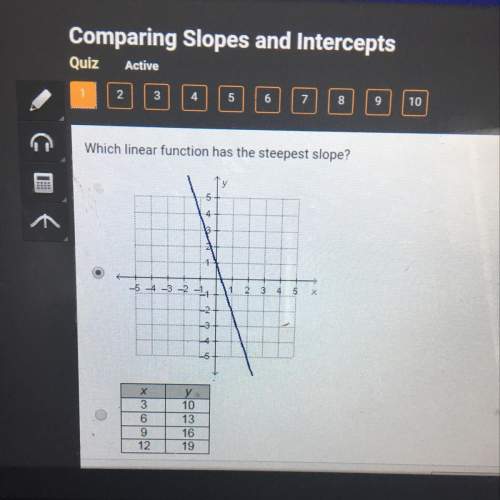
Mathematics, 11.11.2019 22:31 jesse7412
Ornithologists have determined that some species of birds tend to avoid flights over large bodies of water during daylight hours. it is believed that more energy is required to fly over water than land because air generally rises over land and falls over water during the day. a bird with these tendencies is released from an island that is 5 km from the nearest point b on a straight shoreline, flies to a point c on the shoreline, and then flies along the shoreline to its nesting area d. assume that the bird instinctively chooses a path that will minimize its energy expenditure. points b and d are 13 km apart.
(a) in general, if it takes 1.4 times as much energy to fly over the water as land, how far should point c be from b in order to minimize the total energy expended in returning to its nesting area?
km
(b) let w and l denote the energy (in joules) per kilometer flown over water and land respectively. determine the ratio w/l corresponding to the minimum energy expenditure given that the bird flies to the shore at a point x kilometers from b. (your answer may depend only on x.)
w/l =
(c) if the ornithologists observe that birds of a certain species reach the shore at a point 9 km from b, how many times more energy does it take this species to fly over water than land?
ornithologists have determined that some species o

Answers: 1


Another question on Mathematics

Mathematics, 21.06.2019 13:40
Which expression is equivalent to (4x^3*y^5)(3x^5*y)^2 \a) 24x^13*y^7b) 36x^13*y^7c) 36x^28*y^7d) 144x^16*y^12
Answers: 1

Mathematics, 21.06.2019 21:00
Which of the functions graphed below has a removable discontinuity?
Answers: 2

Mathematics, 21.06.2019 21:00
What is the length and width of a 84.5 square foot rug? will mark
Answers: 1

Mathematics, 22.06.2019 00:00
I've been working on this for a few days and i just don't understand, it's due in a few hours. you.the direction of a vector is defined as the angle of the vector in relation to a horizontal line. as a standard, this angle is measured counterclockwise from the positive x-axis. the direction or angle of v in the diagram is α.part a: how can you use trigonometric ratios to calculate the direction α of a general vector v = < x, y> similar to the diagram? part bsuppose that vector v lies in quadrant ii, quadrant iii, or quadrant iv. how can you use trigonometric ratios to calculate the direction (i.e., angle) of the vector in each of these quadrants with respect to the positive x-axis? the angle between the vector and the positive x-axis will be greater than 90 degrees in each case.part cnow try a numerical problem. what is the direction of the vector w = < -1, 6 > ?
Answers: 1
You know the right answer?
Ornithologists have determined that some species of birds tend to avoid flights over large bodies of...
Questions

Geography, 17.09.2019 13:50

Health, 17.09.2019 13:50


Mathematics, 17.09.2019 13:50

Mathematics, 17.09.2019 13:50

Mathematics, 17.09.2019 13:50


English, 17.09.2019 13:50


Biology, 17.09.2019 13:50


Mathematics, 17.09.2019 13:50


Mathematics, 17.09.2019 13:50


Chemistry, 17.09.2019 13:50

Mathematics, 17.09.2019 13:50

Mathematics, 17.09.2019 13:50





